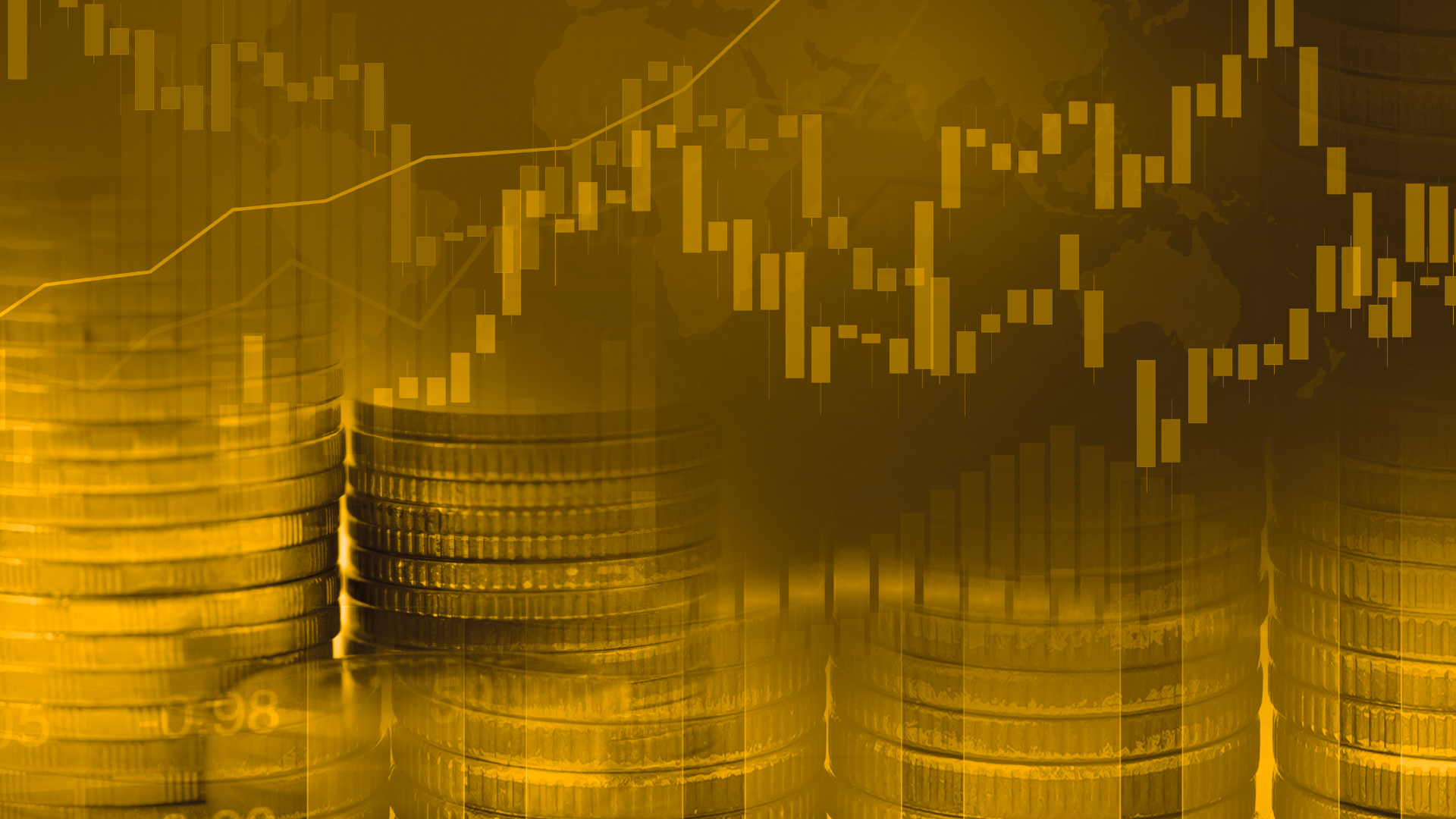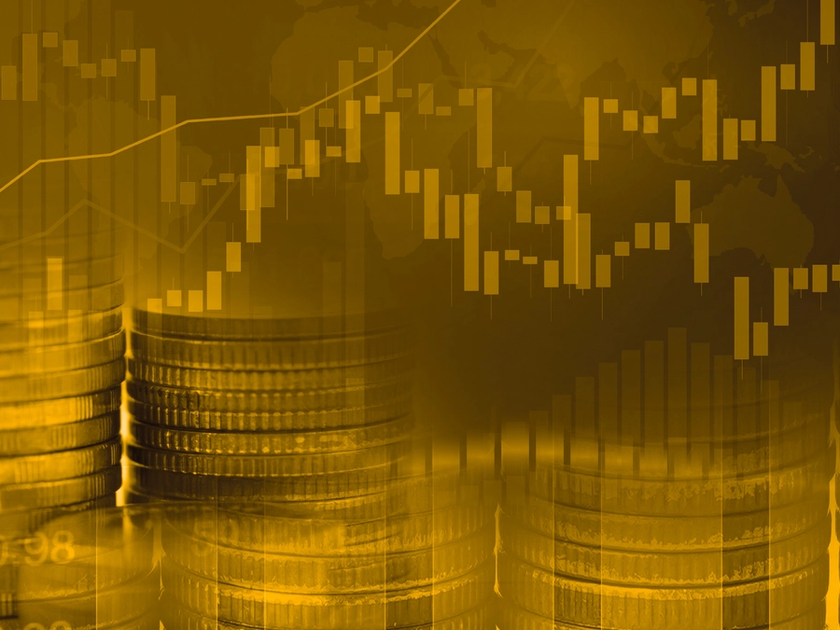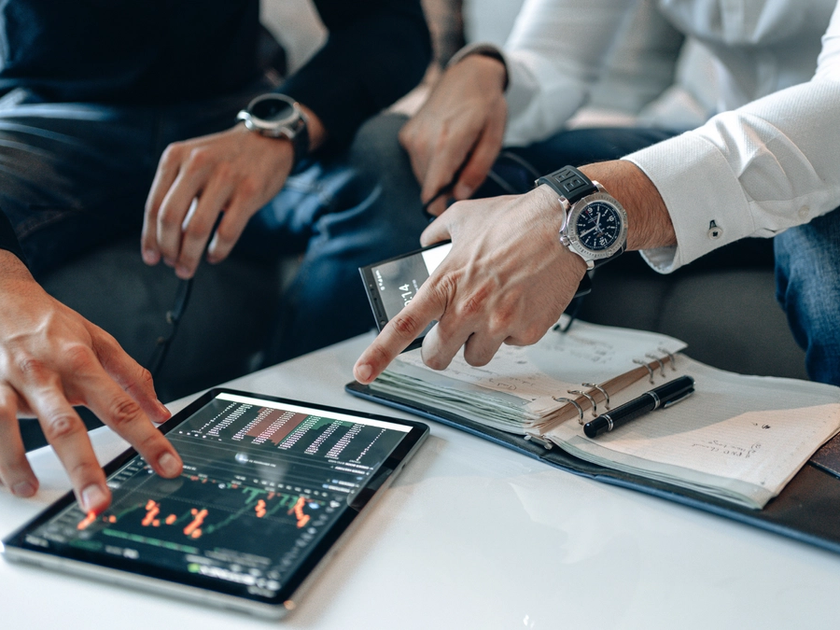What is polkadot?
Polkadot (DOT) is a cryptocurrency and is among one of the biggest cryptocurrencies in the world, measured on market value. In July 2022, polkadot had a market value on 50,7 billion DKK according to Coinbase.
What makes polkadot special are the features that its blockchain technology offers, which among others make it possible for other blockchains to ‘speak with each other’. For example, it’s not possible for bitcoin and ethereum 's blockchain to communicate directly with each other, unless an assisting technology is used.
And that’s exactly what polkadot is.
In this blog post, we’ll dive into the idea behind polkadot, how the cryptocurrency can be used, and its history.
Table of contents:
- What’s the idea behind polkadot?
- What can polkadot’s blockchain do?
- What are polkadot’s tokens (DOT) used for?
- Smart contracts
- Decentralised apps
- NFTs
- Crypto games
- The polkadot story: Who created polkadot?
What’s the idea behind polkadot?
Polkadot (DOT) is first and foremost a blockchain-technology created to facilitate communication between other blockchains.
Secondly, polkadot is a token, which goes by the name of DOT.
So you can distinguish between:
- polkadot as a blockchain
- and polkadot (DOT) as a token
What can polkadot’s blockchain do?
Polkadot is equipped with a main blockchain – also called a relay chain. Besides that there is a long number of user-developed chains who work parallel to the main blockchain – also called parachains.
It’s through the development and use of parachains that polkadot has made it possible for others to use the network to exchange information and value across different blockchains.
Polkadot also enables us to gather information and value from databases which aren’t blockchains. Like that, you can really integrate the “real” world, as we know it today, in the blockchain technology.
There’s a plethora of opportunities:
Example:
Let’s say that two people named Andrew and Bill want to engage in a crypto-bet that Elon Musk will tweet about dogecoin a minimum of two times in August 2022.
A smart contract is created on polkadot’s blockchain, which has the following information:
If: Elon Musk tweets twice about “dogecoin” in the time period August 1st - August 31st
Then: 100 polkadot tokens are to be transferred to Andrew
Before the smart contract is functional, there needs to be a live feed of data from Elon Musk’s Twitter-profile to the smart contract - meaning the blockchain.
That’s why the whole idea of polkadot is to make it possible for the Twitter data to be read and comprehended by the blockchain, so the smart contract can be executed.
What are polkadot’s tokens (DOT) used for?
Polkadot is a cryptocurrency, which is why you can buy and sell them just like you can with bitcoin , ethereum , and all the other popular cryptocurrencies.
But polkadot also has another feature besides ‘just’ working as a means of investment. Here, polkadot’s token, DOT, can best be compared to the tokens you use in laundromats.
You exchange your regular money for tokens, which you can then use to operate the washing machines.
In that same way, you’re exchanging your money for polkadot tokens, which you can then use to operate the features in the polkadot blockchain.
These features could be smart contracts, decentralised apps, NFTs, and crypto games, which we will explain in more detail now.
On top of that, polkadot’s tokens are also used for staking and governance, which we will look at further down in this post.
Smart contracts
Smart contracts are decentralised contracts between two parties, who’d like to trade with or make a deal with one another. Today, most trades are facilitated by some sort of intermediary. When you purchase a house, there’s the bank, the state and the lawyer, who all have a say in the transaction – and who will naturally take a piece of the cake in the form of fees, taxes and so forth.
And when you buy a car, there’s the dealer, the state, and the lawyer again.
Essentially, all binding contracts today are facilitated by someone – which is exactly what makes them binding. Because if the bank, state or lawyer wasn’t able to vouch for the contents of a contract, who would then make sure that people actually kept their side of the deal?
Example:
If you’re selling your car to Peter, the centralised intermediaries make sure that you actually get the money you’re supposed to get. If Peter tries to trick you, you can turn him into the police. The intermediaries have documentation that Peter has made a breach of contract, and you can prosecute him.
Smart contracts:
Imagine then, that it wasn’t the bank, the state or the lawyer, who vouched for the contract, but instead it was a piece of code attached to a blockchain.
That’s the idea with smart contracts.
The code for a smart contract between Nate and Peter could look like this: Car = 100,000 DKK
If Nate receives 100,000 DKK
Then the registration certificate will automatically be given to Peter.
A smart contract is the way in which a number of demands need to be satisfied. If the demands are not satisfied, the contract will then be invalidated, and the trade will not be executed.
With a centralised deal, you’d need to trust the intermediaries, but with a smart contract you’d need to trust a piece of code. And that’s also one of the most important points about blockchain technology: You don’t need to trust central authorities, but instead you’d need to trust technology.
Another derived effect is also that smart contracts generally cost less to operate than it does to employ a banker, a state official, a used-car dealer, and a lawyer.
Decentralised apps
Decentralised apps (also known as dApps) are like normal apps, but instead of being connected to a central server, the app is spread across an entire network of computers via the blockchain.
For example, when you use your Twitter app, the technology is centrally stored with Twitter. That’s why Twitter has 100% autonomy over the platform, and if they want to ban a person from using the platform, such as with Donald Trump, they can do so.
If Twitter were a decentralised app, it wouldn’t be possible to ban Donald Trump from the platform – unless the majority of the blockchain network agreed upon doing so. In that way, decentralised apps can be described as being democratic, since it’s the network who has autonomy over the platform.
NFTs
NFTs are “digital barcodes”, which secures ownership of assets. An asset could for example be a digital artwork from the collection Bored Ape Yacht Club .
Let’s say you own an artwork. How could we trust that? The digital barcode secures that the image file you have on your computer is the original file. There won’t be any doubt, because the barcode is embedded in the blockchain, which is controlled and verified by a large network of participants.
So it’s not only you that can prove the copyright and ownership. So can everyone else in the network.
With ‘regular’ artwork, such as the Mona Lisa, it’s practically impossible to prove that the version on display at the Louvre actually is the real deal. With a digital barcode – or NFT – it would be easy to prove.
Crypto games
Today, games are also typically connected to a single central computer. If you were to buy an extra feature in a game – such as a skin – it’s technically still under the game’s copyright after the purchase. You can’t take your skin “out of the game”, and you typically won’t be able to resell it. So you’ve basically paid money for something that you don’t actually have any ownership of, because the game is connected to a single central computer that’s owned by the manufacturer.
With crypto games, the idea is that the game is distributed to several people via a blockchain. The game isn’t owned centrally in a single place, but is instead a common project existing on every single computer that participates in the network.
That also means that any purchased features in the game can be owned by the people who actually bought them.
An example of a popular crypto game is Axie Infinity . The gameplay is similar to Pokémon, where you need to catch different characters, which can then be trained and used to battle other players.
Each character – or “Axies” – are digital items that the player has full ownership of. Axies can thus also be sold on an online marketplace to other players, who are interested in owning that particular character.
Polkadot staking and governance
Polkadots are used as a type of laundromat token to activate certain features of a blockchain. On top of that, polkadot’s token DOT is also used for staking.
Staking is polkadot’s answer to mining , which you can read more about here.
When new polkadot tokens are being issued, it’s through staking. At the same time, staking is also the way in which the blockchain network is secured.
Read more about polkadot staking here.
Governance covers the fact that people are holding votes via the polkadot network in relation to the general direction of the polkadot project. Any owner of polkadot tokens can use their tokens to participate in votes on the network.
What is being voted on is up to the polkadot network itself, and the theory and technology behind the voting processes are very sophisticated. You can read more about polkadot’s voting processes and governance here.
An example of a vote was in 2020, where the polkadot network decided to increase the maximum amount of tokens there could be in circulation.
Before the vote, there was a max cap of 10 million tokens, and with 86% of the votes, the cap was raised to 1 billion. Read more about the event here.
The polkadot story: Who created polkadot?
Polkadot was created by Dr. Gavin Wood, who also helped develop ethereum . Actually, it was Dr. Gavin Wood, who developed Solidity – the computer language that makes it possible to develop smart contracts and decentralised apps on ethereum’s blockchain.
In October 2016, he published the first draft of polkadot’s white paper , that set the framework of the project, and in 2017, the first tokens were sold.
How to get started with trading polkadot
With Lunar Block it’s easy to get started with trading polkadot. All you have to do is download the Lunar app, and sign up to Lunar Block. You need to take a test in connection to the sign up, where we will ask you about the risks of cryptocurrencies . You can see all the risks in the Lunar app, before you take the quiz.
Once you’ve been approved, you can get started with crypto trading right away.
Get started with polkadot here
- 1
Download Lunar for free
Go to App Store or Google Play and download the Lunar app. Find your photo ID, as you need that to sign up.
- 2
Sign up to Lunar Block in the app
Find Lunar Block under “Products” and sign up. You’ll be asked to take a test about crypto first - among others things, it’s to see if you’re aware of the risks. You can learn more about the risks in the app before you take the test.
- 3
Buy polkadot with a single swipe
When we’ve approved you, you can buy crypto right away - polkadot, for instance - in the app, and buy with a single swipe.
Cryptocurrencies can rise and fall
When you trade cryptocurrencies, you need to be aware that it carries a large risk. The value of your cryptocurrency can both rise and fall, and you can risk losing the entire amount you’ve invested in cryptocurrencies.
Cryptocurrency trading is done through Lunar Block. Lunar Block is not regulated by the Danish Financial Supervisory Authority (Finanstilsynet). That means you won’t have the same protection as when trading e.g. stocks or other regulated assets.
We do not counsel
We do not advise on currencies and do not make recommendations for either buying or selling. We can provide factual information about the different currencies, but past price developments are not an indication of future developments.
No information from Lunar Block should therefore be considered as recommendations and all decisions are up to you alone.
Last updated April 18, 2023. We’ve collected general information. Please note, that there may be specific circumstances that you and your business need to be aware of.
You might also like...
Where can I pay with solana?
Cryptocurrency is becoming so widespread and acknowledged abroad that you can use the currency just like regular payment methods on some...
How do you buy solana as regular stocks?
Because solana (SOL) is a currency, and not a business, you can’t actually invest directly in solana like it’s a stock.
Are cryptocurrencies a good investment?
Cryptocurrencies can be a great addition to your portfolio - if you’re willing to run the risk. Cryptocurrencies are “high risk - high...
What is bitcoin?
Bitcoin is a digital currency, or cryptocurrency, as it’s also called. Bitcoin is the first and largest cryptocurrency measured on market...


